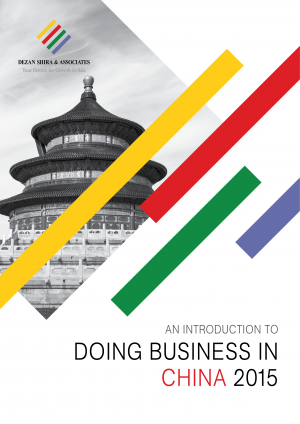How do you Position Premium Brands in China?
It’s key to remember that commodities can be turned into Chinese luxury products with the right brand positioning. With consumer suspicion of domestic goods still high, food products and raw commodities, such as sweet snacks and milk, that put an emphasis on quality are able to command a premium price on the market in China.
In order to better position their products as luxury items, many companies are relying on clever advertisements and packaging designs to appeal to consumers. Yili Dairy, for example, uses red and gold — colors traditionally associated with wealth and good fortune in China — to bring a grand feel to its products on the shelves and on subway billboards. The milk in Yili’s ads also appears in an elegant carafe and wine glasses, drawing another association with China’s luxury wine market.
This approach is quite common in China. Our research has found, for instance, that many companies use the color gold on their packaging to make their products appear more upmarket and luxurious. The traditional ‘yellow-gold’ that’s popular in China is also morphing into a more sophisticated high-end gold. These golden elements can be found in swirls, ribbons, sparkles and glitter that really light up supermarket shelves. We’re also seeing the likes of matte and tin being used in similar ways in packaging and advertisements to make products stand out as more upmarket and thus of better quality.
Though successful in reaching consumers, this approach has experienced some backlash of late among those who believe Chinese consumers are being bombarded with glistening shelves with little differentiation between products.
![]() RELATED: Business Advisory Services from Dezan Shira & Associates
RELATED: Business Advisory Services from Dezan Shira & Associates
Perhaps in light of this, other brands are trying to connect with luxury consumers in another way, by playing up their authenticity. These days, it’s not unusual in high-end supermarkets to see products like coffee or organic food items being displayed in woolen bags or pouches to drive home the idea they came straight from the farm. That said, market giants such as Mondelez still cover their shelves in their trademark blue and white ‘glossy’ style, which consumers recognize immediately. The key here is to know exactly what your brand stands for and how it fits into the Chinese market and then to optimize your packaging accordingly.
Product shots are also more important than ever, with a range of devices being used to add extra dynamism to packaging to make it pop on the shelf. Food packaging in China is bursting with cookie crumbs, splashes of milk, drips of chocolate, as well as all manner of spoons, swirls and steam. Consumers in China are particularly drawn to packaging with excitement and energy.
That said, we’ve learnt it’s also important to remain true to your heritage. Chinese consumers are after the best products and they’ll buy into your brand narrative if you give them a chance. Don’t be shy to use elements such as flags, logos, and other imagery to really spell out where your product originates. The key here when positioning a premium good is to leverage your existing brand equity back home and really bring it to life on a Chinese shelf using semiotics and language that Chinese consumers are looking for and can understand.
|
The Silk Initiative specializes in food and beverage (packaged goods and retail) marketing consultancy leveraging category, consumer and trade insights to develop better brand, product, packaging and retail strategies for your business when it comes to the China market. You will find them comfortable developing brand positioning, in home visits and market (consumer and trade) safaris, new product ideation and flavor development, packaging format and full graphic design production, PR support planning and social media platform development, distribution and retailer partner development. Please sign up for their China food & beverage newsletter here, or contact them directly at info@thesilkinitiative.com.
|
![]()
 Employing Foreign Nationals in China
Employing Foreign Nationals in China
In this issue of China Briefing, we have set out to produce a guide to employing foreign nationals in China, from the initial step of applying for work visas, to more advanced subjects such as determining IIT liability and optimizing employee income packages for tax efficiency. Lastly, recognizing that few foreigners immigrate to China on a permanent basis, we provide an overview of methods for remitting RMB abroad.
 An Introduction to Doing Business in China 2015
An Introduction to Doing Business in China 2015
Doing Business in China 2015 is designed to introduce the fundamentals of investing in China. Compiled by the professionals at Dezan Shira & Associates, this comprehensive guide is ideal not only for businesses looking to enter the Chinese market, but also for companies that already have a presence here and want to keep up-to-date with the most recent and relevant policy changes.
 China Retail Industry Report 2014
China Retail Industry Report 2014
In this special edition of China Briefing, we provide an overview of the retail industry in China and the procedures for setting up a retail shop, focusing specifically on brick-and-mortar physical retail stores. Further, we have invited our partner Direct HR to offer some insights on the talent landscape in the retail industry, as well as tips for recruiting retail personnel in China.
- Previous Article Outlook on Light Manufacturing in China: October 2015
- Next Article China’s Food Industry: Understanding the New Two-in-One Business License


























